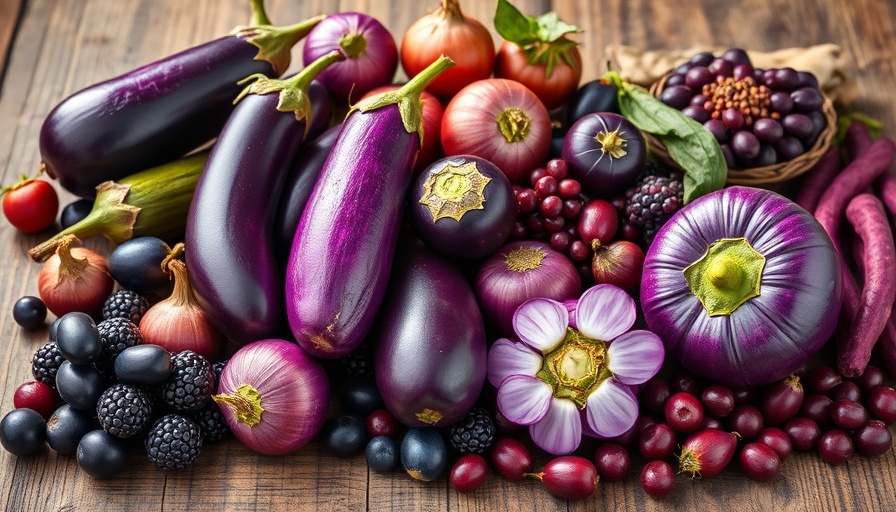
The Vibrant World of Purple Produce: A Nutritional Powerhouse
Purple fruits and vegetables are more than just visually appealing; they bring an array of health benefits to the table. Rich in phytochemicals, particularly anthocyanins, these foods contribute to their vibrant hues and offer powerful antioxidant properties. Think about the aesthetic appeal of plates filled with deep purple eggplants, juicy blackberries, and toasted beetroot. Beyond their gorgeous colors, purple produce holds a royal status in the realm of nutrition.
What Brings Color to Our Food?
Anthocyanins are the main pigments responsible for the purple color in foods like grapes, plums, and blueberries. These compounds not only enhance the visual appeal of fruits and vegetables; they play a crucial role in combating oxidative stress in the body. Alongside anthocyanins, other phytochemicals contribute to the rich spectrum of colors in produce. For instance, beets owe their vibrant hue to betalains, while red cabbage packs a solid punch with both anthocyanins and antioxidant benefits.
Why Should You Incorporate More Purple Foods in Your Diet?
Incorporating purple foods into your diet can lead to numerous health benefits. Studies indicate that diets rich in antioxidants may lower the risk of chronic diseases such as cardiovascular diseases and certain cancers. For example, the resveratrol found in red grapes has been linked to cardiovascular health and may improve circulation. Not only do these colorful fruits help protect our cells from damage, but they also elevate our meals with their beautiful hues and varied flavors. So, the real question is, why not eat more purple foods?
Top Purple Foods to Grow At Home
If you're a garden lover or someone looking to embark on a gardening project, consider growing your own colorful produce. Here are some standout choices:
- Beets: These not only beautify your garden with their vibrant color but are also rich in vitamins and minerals.
- Blackberries: Easy to grow and incredibly delicious, these fruits are packed with antioxidants.
- Eggplant: A versatile ingredient in various dishes, eggplants are a great choice for amateur gardeners.
- Purple Potatoes: These can add a colorful twist to your meals and contains antioxidants as well.
- Red Cabbage: A fantastic addition to salads, it also provides health benefits, making it a great choice for home gardens.
Gardening Tips for Growing Purple Produce
Growing your own purple produce can be rewarding and fun. Here are a few tips to ensure success:
- Soil Quality: Ensure your garden soil is rich in nutrients and organic materials to promote the healthy growth of these colorful crops.
- Companion Planting: Pair purple vegetables with compatible herbs and plants to enhance their growth while naturally warding off pests.
- Water Management: Regular water management is key to maintaining healthy plants, especially during the growing season.
The Broader Impact of Colorful Eating
The benefits of eating a color-rich diet go beyond personal health. More vibrant, diverse produce can lead to sustainable agricultural practices and raised awareness of how we grow food. Consumers today are more informed than ever, tending to seek freshness and diversity within their nutrition. By choosing colorful fruits and vegetables, we can support local farmers and promote sustainability in the food system.
Wrapping Up Your Garden & Plate with Color
In conclusion, embracing purple fruits and vegetables in your diet is a delicious way to amplify both your health and your gardening experience. As you consider your nutritional choices, remember that while purple produce is a fantastic addition, diversity in diet remains key. The journey of healthy eating is about balance, and with each colorful addition, you're adding to your health story. Why not take the step today and explore this vibrant world of colorful eating?
 Add Row
Add Row  Add
Add 




Write A Comment